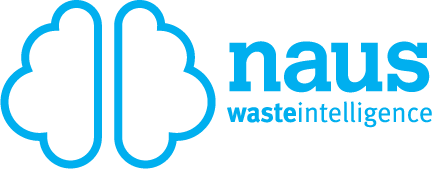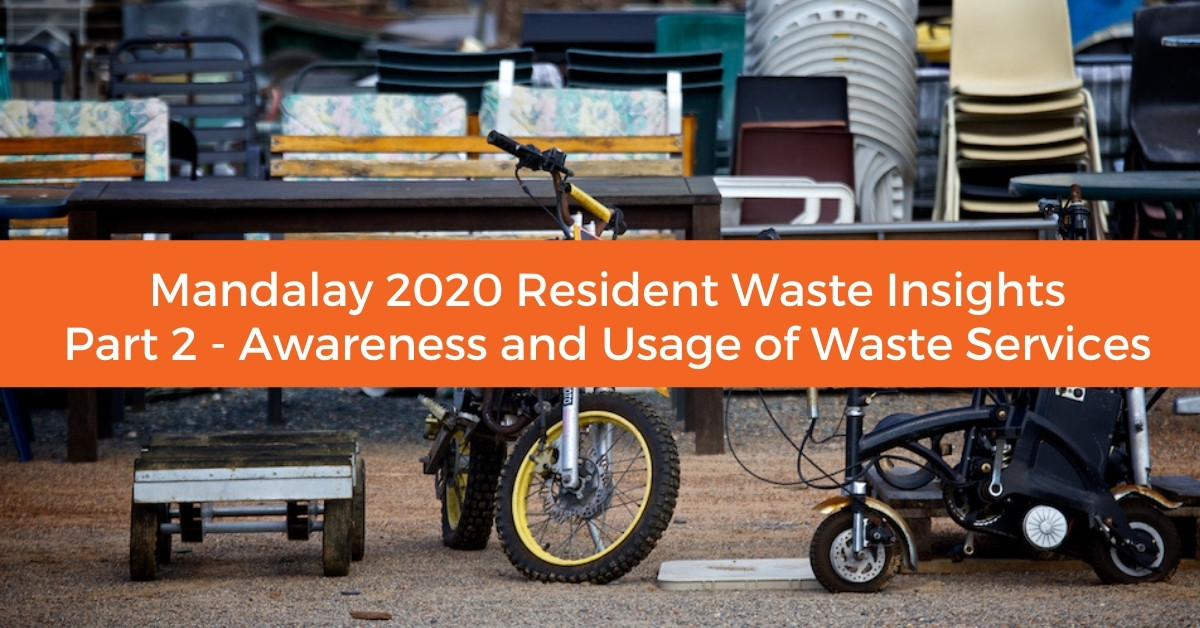
About the Research
Mandalay Technologies conducted online research on key Australian waste industry topics with over 1,500 Australian residents to create the Mandalay 2020 Waste Report. A portion of the data within this report has been interpreted in this blog. For full insights, please download a copy of the full Mandalay 2020 Waste Report.
Awareness and Usage of Waste Disposal and Recycling Services in Australia
Local councils across Australia provide their communities with a variety of waste and recycling services, but are Australians actually aware of all the services available to them? Plus, are these services being used as much or as frequently as Councils expect? In this article, we delve into and interpret 2020 data obtained by Mandalay through Footprints Market Research to help the Australian waste industry better understand awareness and usage of waste disposal and recycling services in Australia.
What does the data say?
Awareness of Waste and Recycling Services
Participants in this research were first asked about their awareness of available waste and recycling services. This was framed as an open-ended question to gain authentic and unprompted responses. As expected, wheelie bin collection was the top response. The next highest mentions were for council tips and kerbside collection followed by recycling centres and containers for cash, which prompted less than half as many mentions.
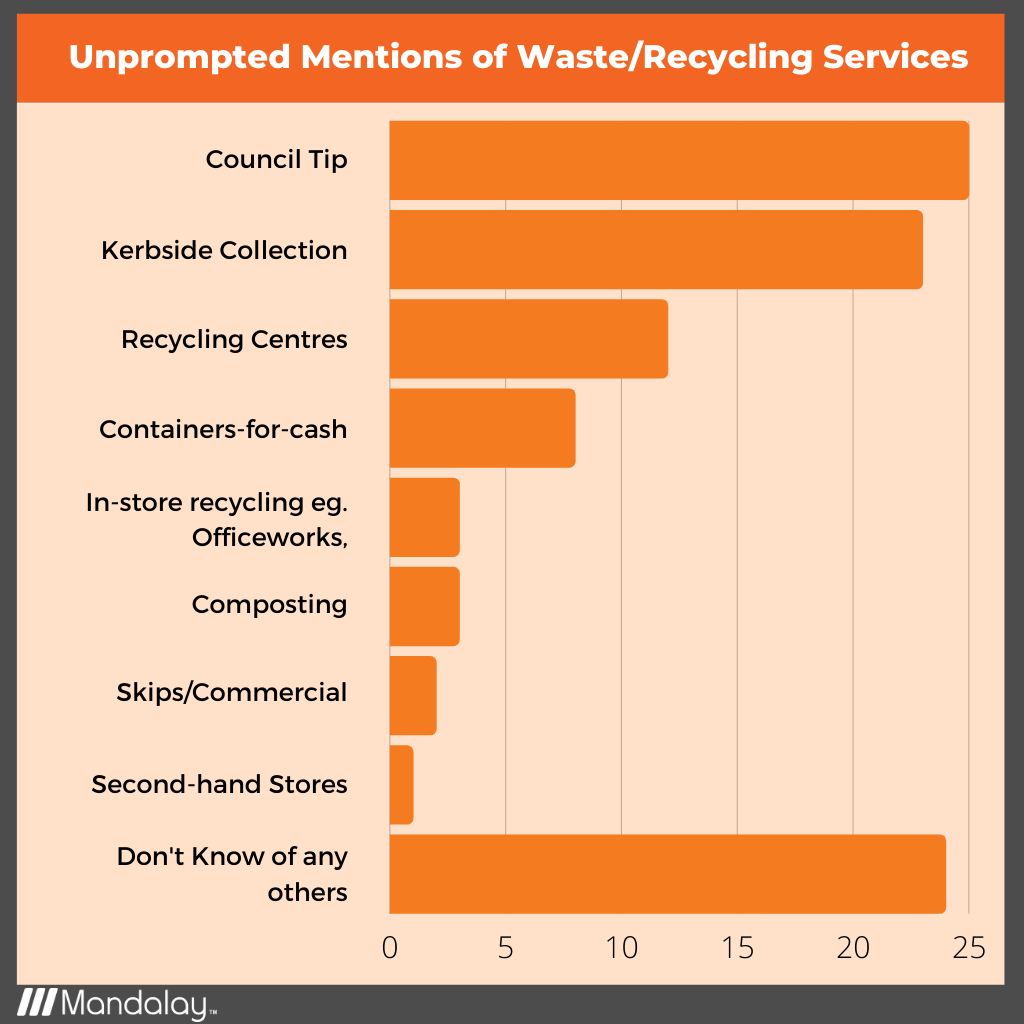
Participants from different locations reported higher mentions for certain waste and recycling services compared to others.
- Queensland residents reported 35% higher mentions for council tips.
- Victoria reported 33% higher mentions for kerbside collection.
- South Australia reported 18% higher mentions for recycling centres.
- Western Australia reported 15% higher for containers for cash.
Awareness of Waste Disposal Services
After requesting unprompted mentions for waste and recycling services, participants were then provided with a full list of waste disposal services and asked to indicate their awareness of those services. Of the participants surveyed:
- Most residents were aware of general waste collection (93%) and recycling collection services (88%).
- Almost three quarters (74%) of residents are aware of council green waste collection
- Two thirds (66%) were aware of council kerbside collection services.
- Almost two thirds (62%) of residents reported awareness of council tips and/or resource recovery centres.
- There was lower awareness of waste collection services such as council tips (56%) and tip shops (32%) in metropolitan areas when compared to regional areas (i.e., 74% and 55% respectively).
- Regional and rural areas have lower awareness, and access to, council pick-ups when compared to metropolitan areas (i.e., 56% and 50% respectively compared to 72%).
- Tip shops had the lowest reported awareness levels overall at 39%.
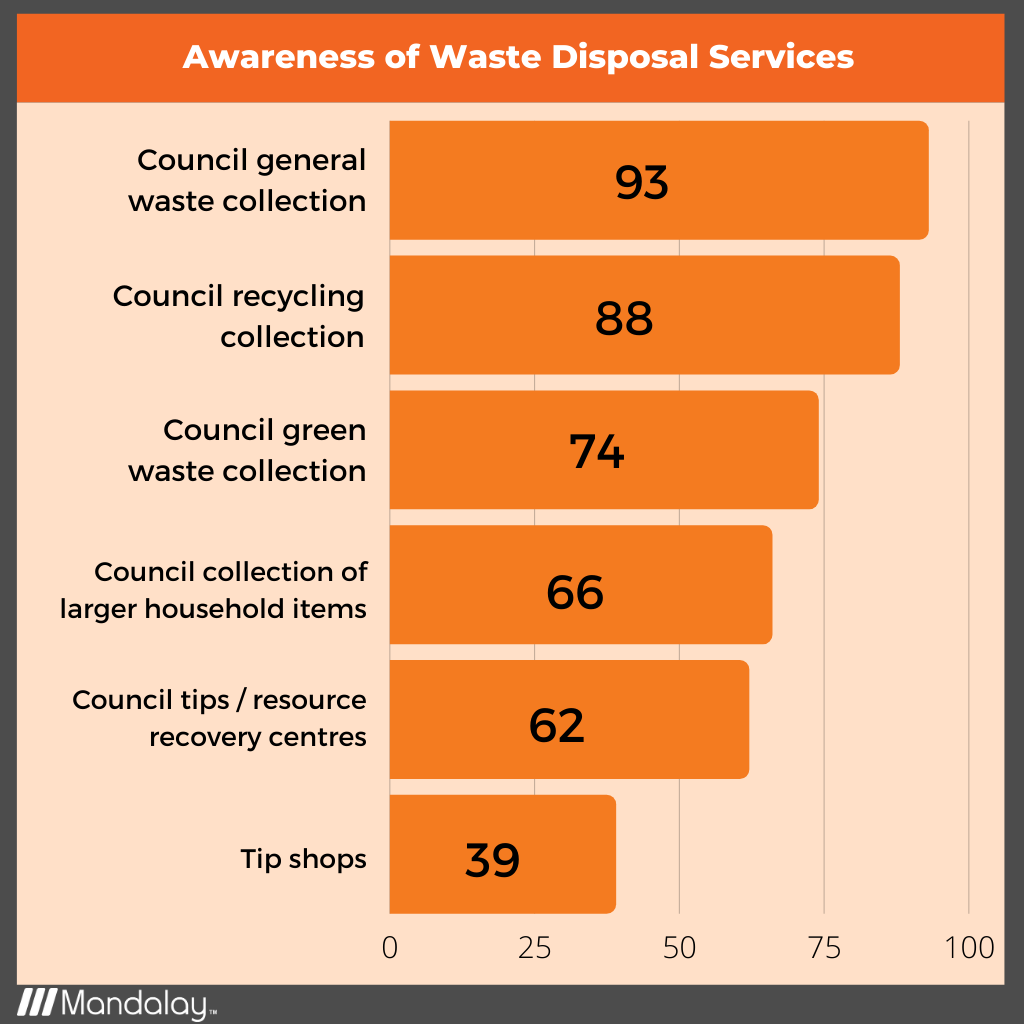
When looking at the awareness of waste disposal services across states and between metropolitan, regional and rural locations, we find that:
- South Australia (89%) and Victoria (82%) had the highest levels of awareness for green waste while Western Australia (60%) and Queensland (64%) had the lowest levels of awareness.
- Awareness of council pickup services was lowest in Queensland at 54% followed by New South Wales at 67% with regional and rural areas also reporting low awareness (56% and 50% respectively).
- Queensland had the highest awareness for council tips at 74% with all other states having awareness levels between 65% and 52%.
- Only 28% of residents in New South Wales and South Australia were aware of tip shops with the highest level of awareness in Queensland at 58%.
- Regional and rural areas had greater awareness of council tips (74% and 73% respectively) and tip shops (55% and 53% respectively) compared to metro areas (56% and 32% respectively) and lower awareness of council pick-up services (56% and 50%).
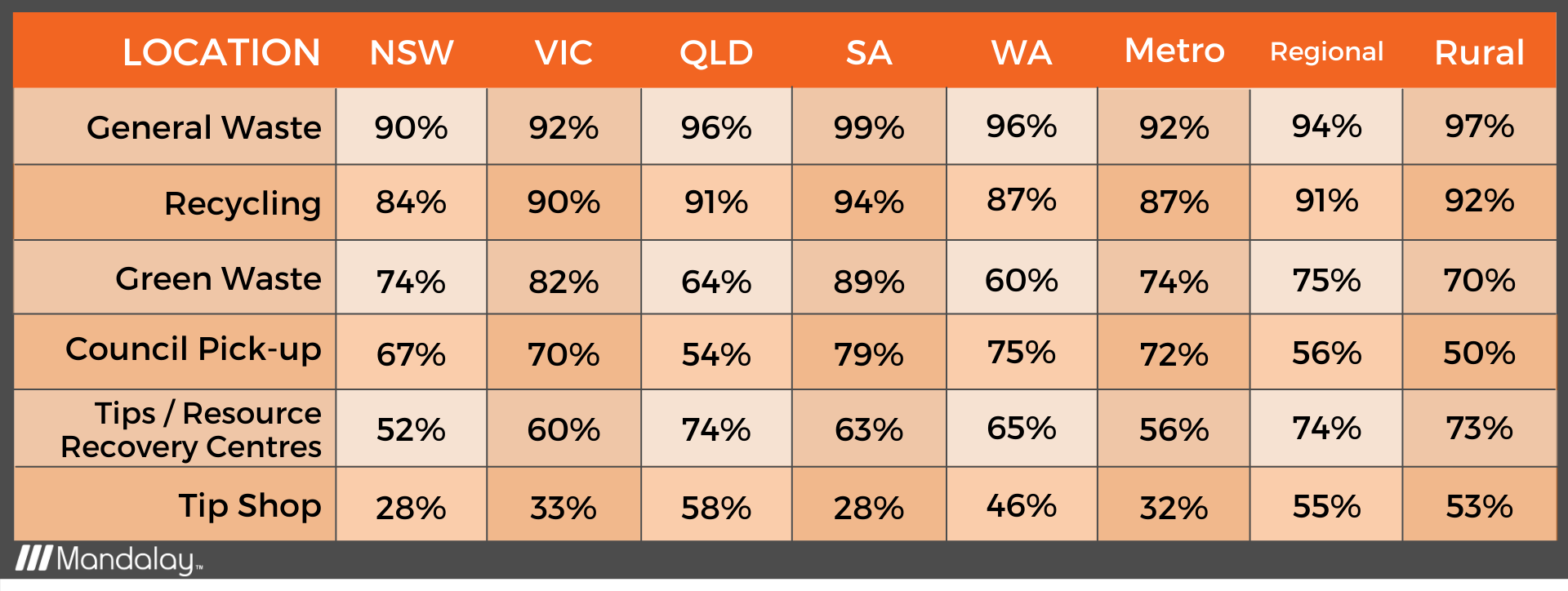
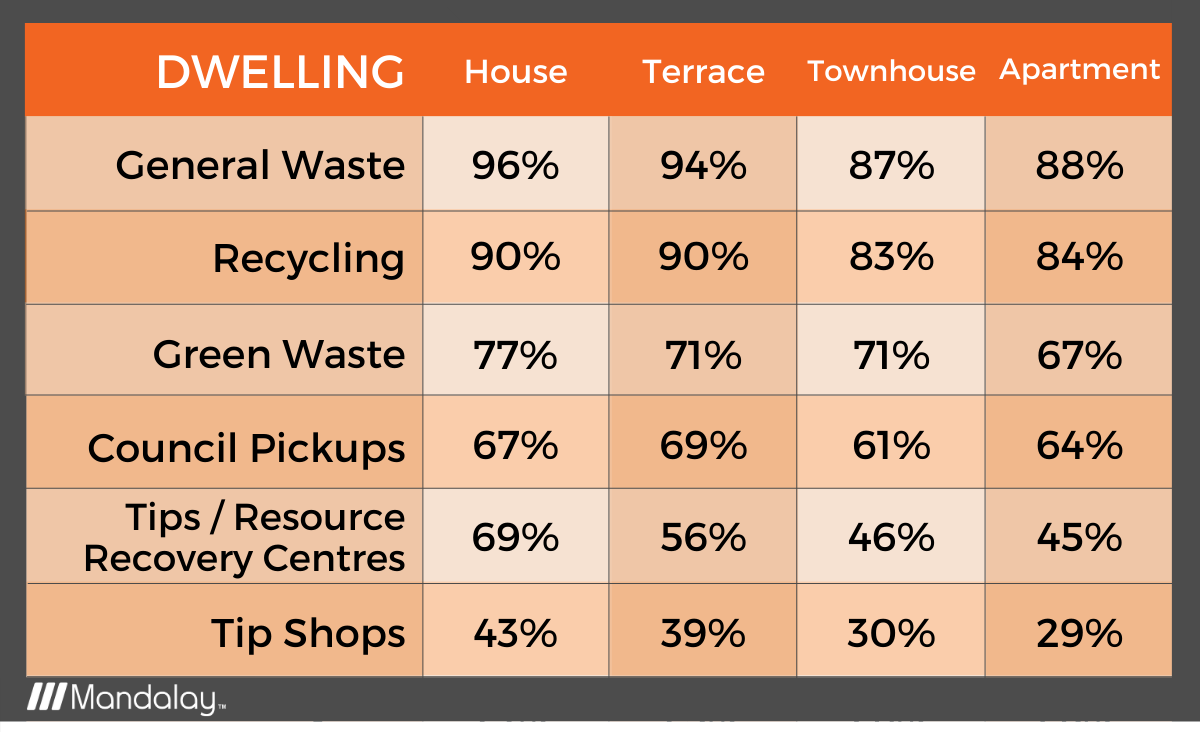
Usage of Waste Disposal Services
What the data also tells us is that awareness levels correlate closely with actual usage of these services across Australia, where awareness and usage levels for waste disposal services are in the same order. For example, the lowest usage was for tip shops at 13% and council tip/resource recovery centres at 29% and waste disposal services that participants were least aware of were tip shops (39%) and council tip/resource recovery centres (62%)
The following waste and recycling services had lower levels of usage compared to levels of awareness:
- Green waste collection had 21% lower usage compared to awareness.
- Council kerbside collection had 27% lower usage compared to awareness.
- Council tips/resource recovery centres had 32% lower usage compared to awareness.
- Tip shops had 26% lower usage compared to awareness.
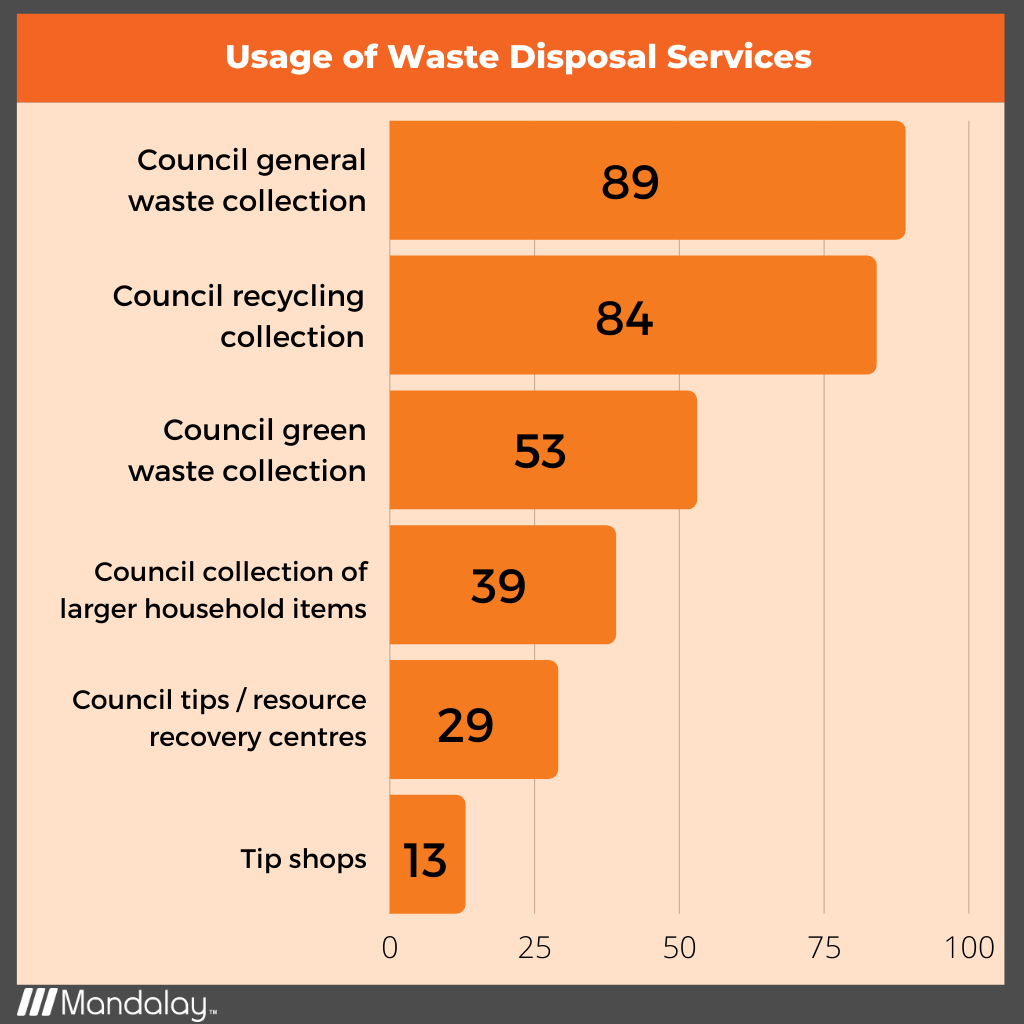
Some key differences in usage have been identified between states as well as metropolitan, rural and regional locations. The data below provides some insights into how well key waste and recycling services are being used comparative to other locations.
- Usage of green waste collection is significantly lower in Queensland (25%) and Western Australia (49%) compared to other states.
- Council tips/resource recovery centres usage is significantly higher in Queensland (45%) compared to other states reporting between 20% and 25% usage.
- The use of tip shops in Queensland is slightly higher (18%) compared to other states reporting between 9% and 15% usage.
- South Australia reported the highest usage of green waste collection at 78%.
- Regional and rural areas reported greater usage of council tips/resource recovery centres (43% and 44% compared to 23% in metro) and lower usage of kerbside collection services (23% and 19% compared to 47% in metro).
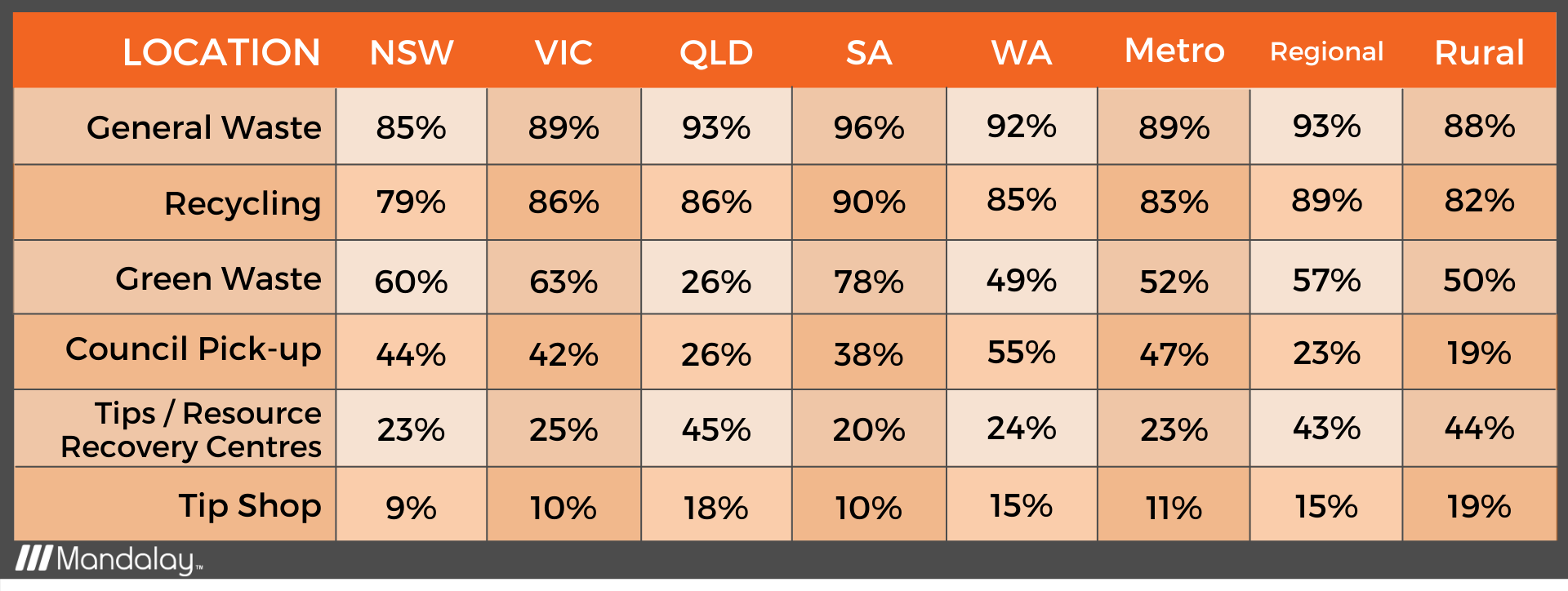
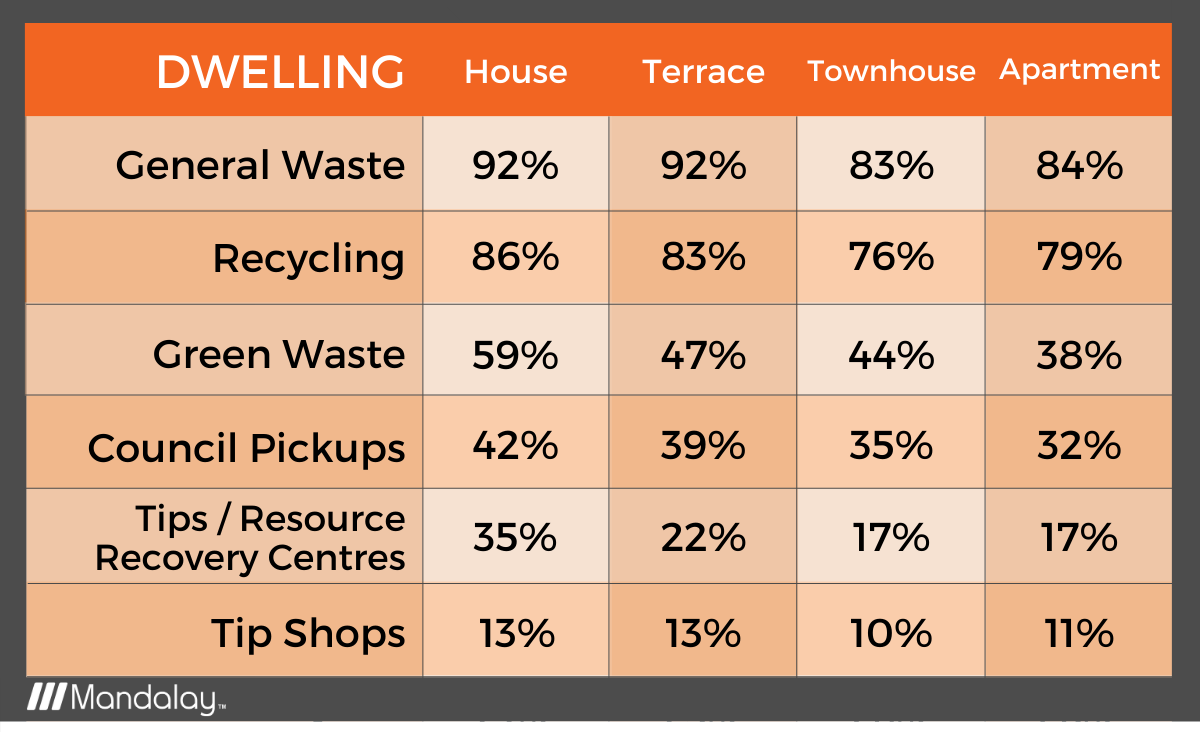
What Can We Learn from the Data?
The data shows us that there’s room for improvement in both awareness and usage of key services across the country, particularly when it comes to tips, resource recovery centres and tip shops. Below are a couple of points to consider in thinking about the data.
There are opportunities to expand or strengthen education and communication efforts when it comes to recycling and resource recovery services available to residents.
Based on the data collected, there appears to be significantly lower awareness and usage of key services that support the reuse and recycling of waste material. In particular, there was the least awareness of tips, resource recovery centres and tip shops across the country as well as the least usage of these services nationally, with only 29% of residents making use of tips and resource recovery centres and 13% using tip shops. There was also notably lower awareness of green waste services in Western Australia and Queensland, which suggests that community education could be enhanced if the service is being offered.
Increasing awareness of these services is one of the ways to increase usage – and increasing usage is important to improving delivery of the shared objective to divert more waste from landfill.
Research completed by Behaviour Works[1] into household recycling behaviours highlights the importance of targeted and tailored communications and engagement measures to drive behavioural changes towards desired outcomes. Specifically, the findings suggest messages that are tailored to the specifics of the relevant location, the residents’ behavioural drivers, and characteristics of the services being offered are key to achieving the desired outcomes.
There are also opportunities to bring greater awareness to the importance of these services in supporting the move towards a circular economy as well as to potentially improve access to those same services.
Excluding general waste and recycling collection services, all other waste and recycling services reported lower levels of usage compared to awareness. While lower awareness and usage of council pickup services is expected from rural and regional areas that often do not have access to such a service, you would expect to see similar levels of awareness and usage across other locations and services.
There are several factors that could be attributed to this – (i) residents did not have access to some of these services despite being aware of them; (ii) they had no need to access these services; or (iii) they were not incentivised to use these services. We know that the amount of waste we generate nationally is continuing to grow and, with more waste, that means residents either did not have access to the services they needed, or they were not incentivised to use those services (i.e., whether for economic or environmental reasons).
Increasing access to waste and recycling services will often require better infrastructure. While investment in recycling and resource recovery infrastructure has increased over the last decade, continued investment will be required to meet increased waste generation and resource recovery targets. More importantly, coordination across jurisdictional boundaries – local, state or federal – will be critical to meeting residents’ needs. Even the Federal Government’s recently released National Plastics Plan 2021[2] highlights the need for a consistent nationwide kerbside recycling collection system.
For leaders in local government, one of the biggest challenges is planning, delivering, and maintaining infrastructure. Without accurate and relevant data, the delivery of such infrastructure can fall short of community requirements and expectations. Data is a powerful tool that can be used to inform strategic investment decisions when it comes to infrastructure delivery and provide insights in resident behaviours.
Incentivising the use of those same services, particularly resource recovery centres and tips, by fostering behaviours that recognise the value of waste and the value of retaining that waste in the economy is also critical. There needs to be consistent national messaging about the importance of the move towards a circular economy so that we all make better choices about what we buy, how we use it and how we dispose of it – with the ultimate goal of not creating the waste in the first place.
Partnerships and collaboration, across all levels of government and with industry, will be critical to not only supporting the delivery of consistent messaging on circular economy behaviours but also to improve access to the right infrastructure in a coordinated way.
[1] Behaviour Works (2020), Reducing Contamination of Household Recycling.
[2] Federal Government (2021), National Plastics Plan 2021.
Want access to even more statistics and insights on awareness and behaviours towards waste and recycling in Australia?
Download a free copy of Mandalay’s 2020 Waste Report here.
Read Part 1 within the Resident Waste Insights Series – How Much Do Your Residents Know?
Read Part 3 within the Resident Waste Insights Series – What’s in Our Wheelie Bins?




